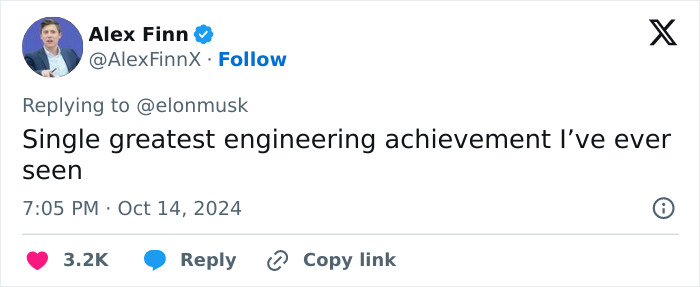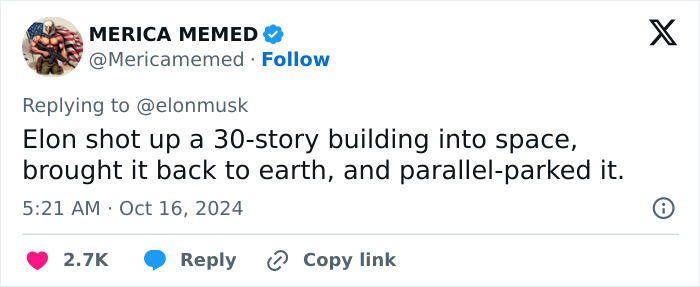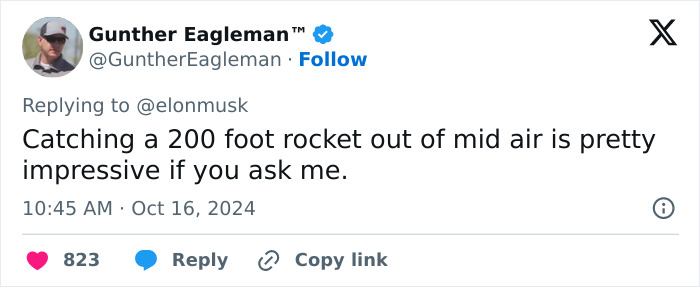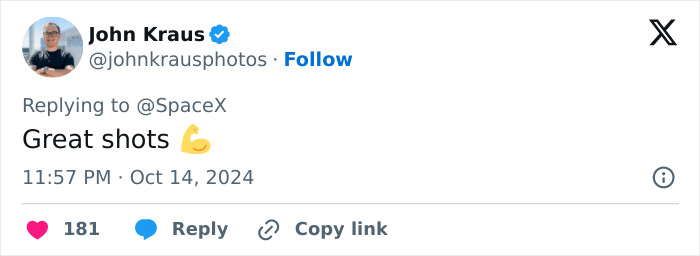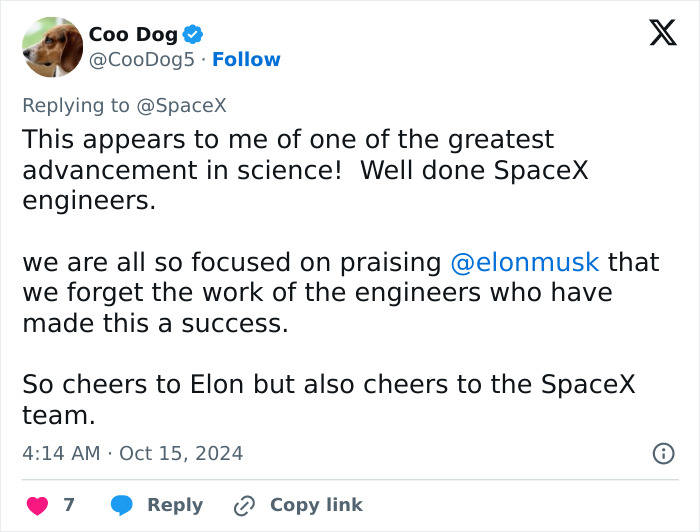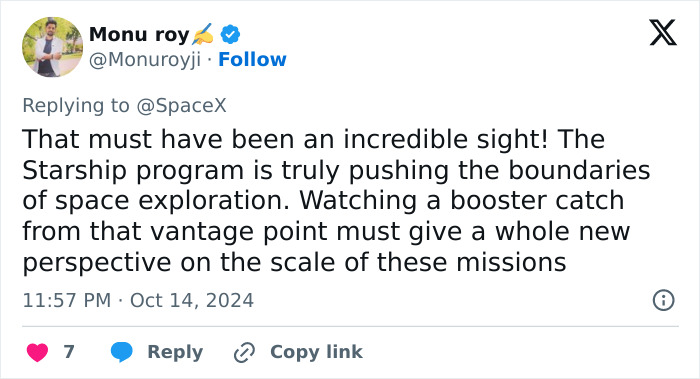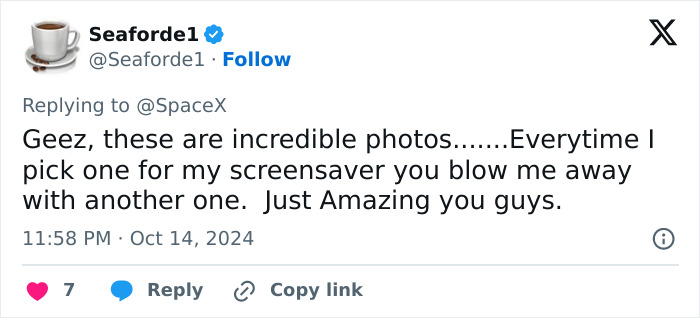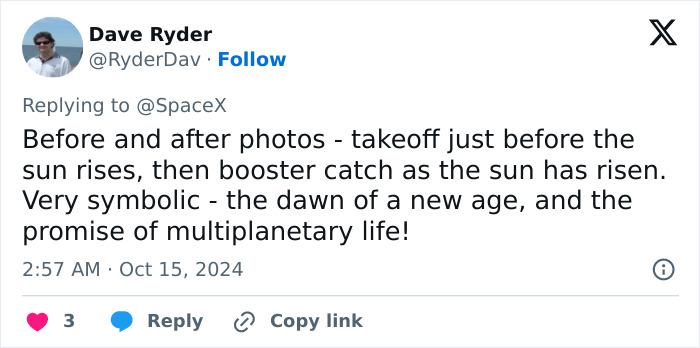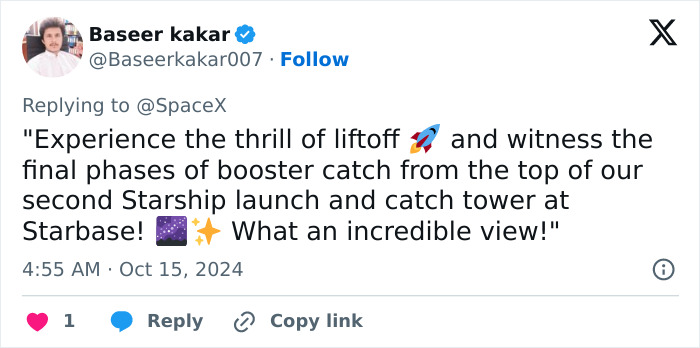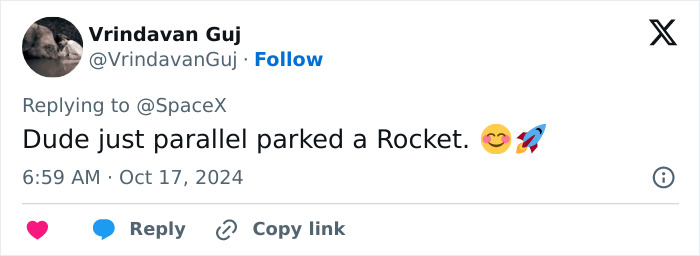Sunday, the 13th of October, was a truly special day that left millions of people with goosebumps all around the world.
SpaceX made a giant step in engineering history when the metal arms of the ‘Mechazilla’ launch tower, taller than the Statue of Liberty, smoothly caught the Super Heavy booster. Yet Elon Musk and the entire SpaceX team do not seem to be resting on their laurels and are already thinking about what’s waiting next.
More info: NASA Space Flight
SpaceX made spaceflight history on Sunday, the 13th of October, when it successfully caught the Super Heavy booster, but doesn’t plan to rest on its laurels
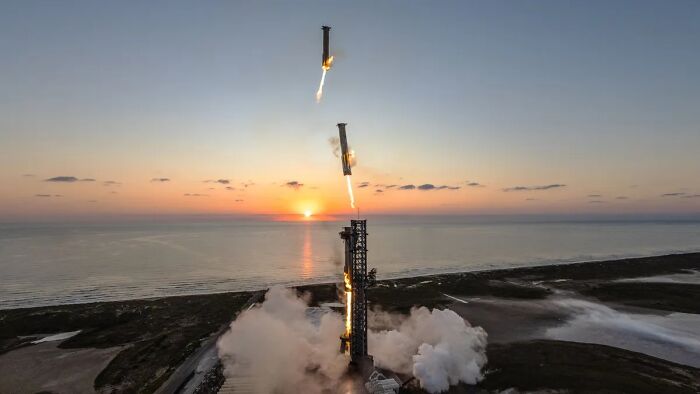
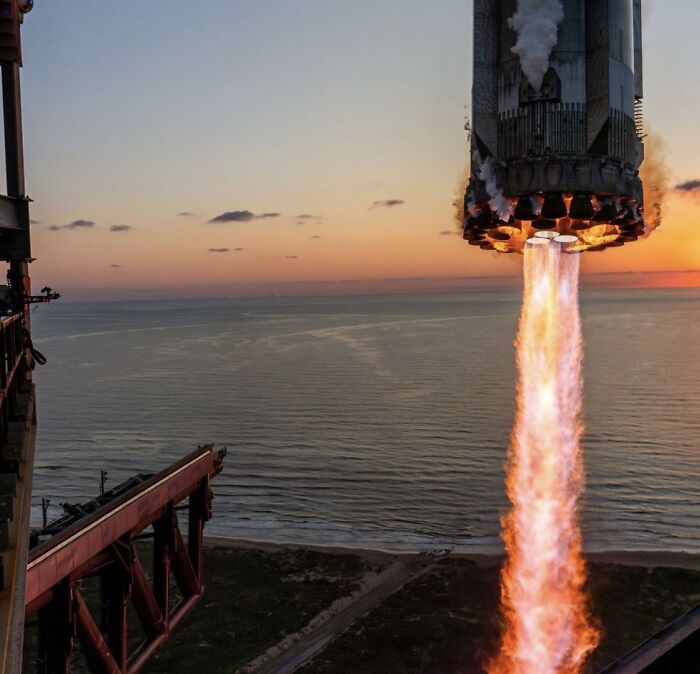

Around two years ago, Elon Musk had a ‘nutty’ idea in his head – to catch the largest and the heaviest flying object ever made.
“Yeah, I mean, it’s a custom-built tower with arms that are designed to catch the largest and heaviest flying object ever made and pluck it out of the air,” Elon shared in a short video at the time.
“But it’s pretty nutty, because you’re going to have this gigantic, you know, booster coming back. That’s 9 meters in diameter, not counting the tines, or roughly 30ft in diameter and it’ll weigh about 250 tons,” he added.
To everyone’s surprise, something that was just a crazy theory became a magnificent mark in history this year as an essential part of SpaceX’s strategy for rapid rocket reusability when the Super Heavy booster gently landed in the arms of the ‘Mechazilla’ launch-tower cradle in Texas.
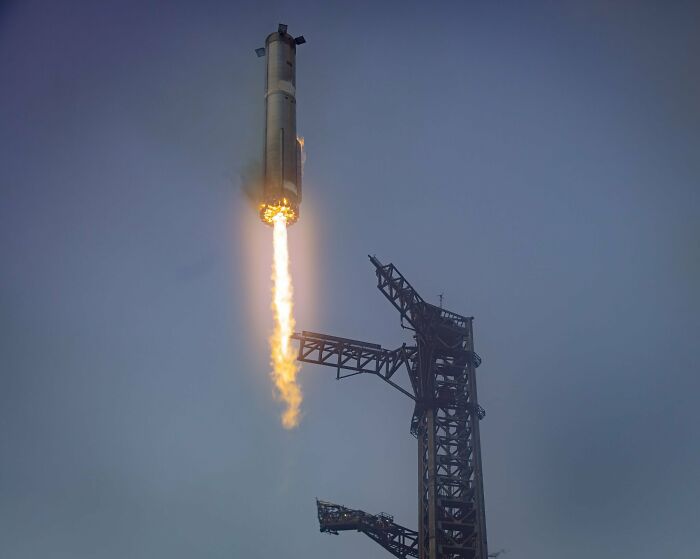
To find out more about what the event was like in person, we reached out to Andrew McCarthy, who was capturing the moment as it happened
Astrophotographer Andrew McCarthy from Arizona, who has over 1.5 million followers on Instagram due to his mesmerisingly unique photography, happened to be in the right time at the right place to capture this historical moment.
“It’s hard to articulate all the feelings that I experienced the moment that booster was captured by the tower. Disbelief, confusion, awe come to mind. It took a few seconds to process, but when it hit me how much this changes everything I was nearly overcome with emotion to the point of tears,” Andrew shared in the interview with Bored Panda.
“This is humanity’s future, and this might be my ticket into space, something I’ve dreamed about since I was a young boy,” he added.
Asked about what was the most special part, Andrew told us that the moment he realized they were going for the catch, when he saw the booster on its way back from space.
“I felt chills along my spine in anticipation of what I knew would be a remarkable show. And then of course the catch itself… due to the delay of the speed of sound we heard the sonic boom the same time the rocket returned to the tower, which made the moment all the more dramatic!” said Andrew, whose mission is to connect people with the universe and to inspire a new generation of celestial explorers.
Yet capturing photos during such a special event was quite the challenge.
“I was using a long telephoto lens, and when you’re quite zoomed in it can be hard to keep an object in frame, especially when that object is moving at supersonic speeds! I nearly missed many of the moments that I hoped to capture, so it was quite stressful,” he explained and shared with us an exclusive unpublished photography that will be later released on photographer’s website.
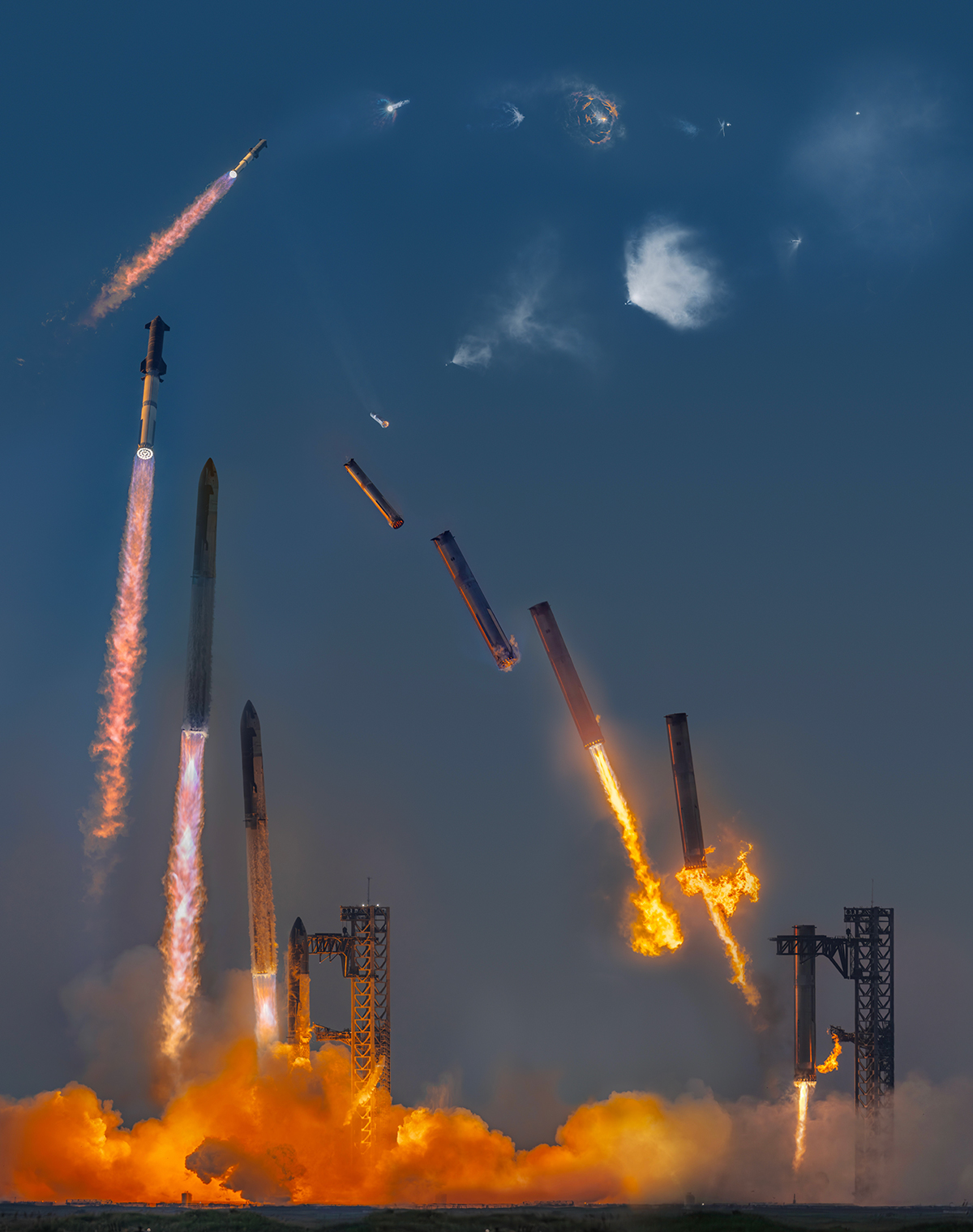
Image credits: Andrew McCarthy
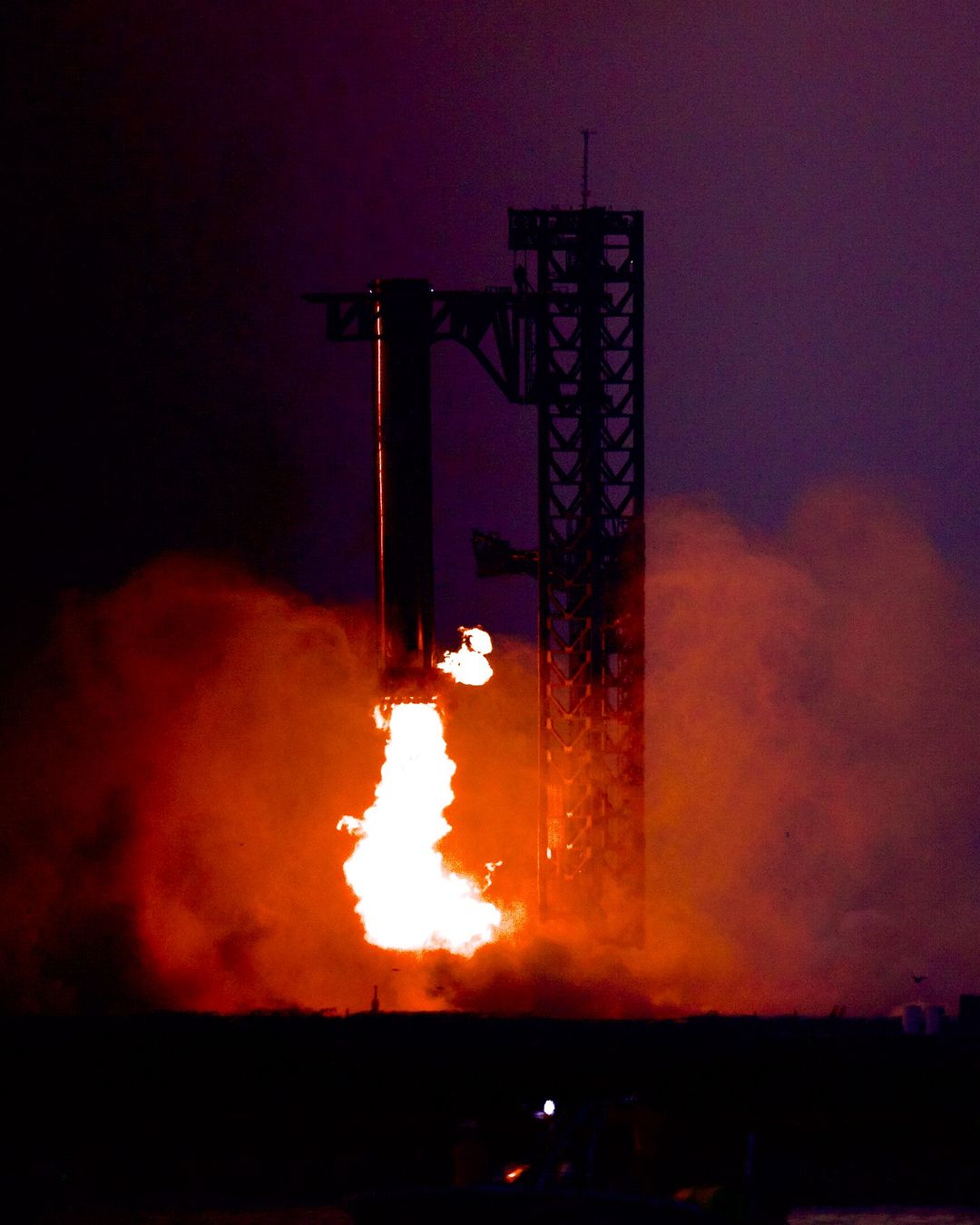
Image credits: Andrew McCarthy
“Even in this day and age, what we just saw, that looks like magic,” Dan Huot, SpaceX spokesperson, said on the remarkable event day.
Yet this is only the beginning of some even bigger ideas and ambitions Elon Musk and the engineer team have.
“Big step towards making life multiplanetary was made today. Becoming a space-faring civilization, being out there among the stars, this is one of the things that I know makes me glad to be alive, I think makes many people glad to be alive,” Elon shared. “Hopefully early next year, we will catch the ship too.”
The company, which made spaceflight history, is planning to do the same ‘catch’ with Starship’s 50-meter-tall (165ft) upper-stage spacecraft.
SpaceX is working on a fully reusable Starship to get people and cargo to the moon and Mars, as well as perform a variety of other spaceflight feats.
“As we prepare to go back to the moon under Artemis, continued testing will prepare us for the bold missions that lie ahead – including to the South Pole region of the moon and then on to Mars,” explained Bill Nelson, NASA administrator.
If everything goes well, SpaceX aims to do the same ‘catch’ with Starship’s 165-foot-tall (50-meter) upper-stage spacecraft
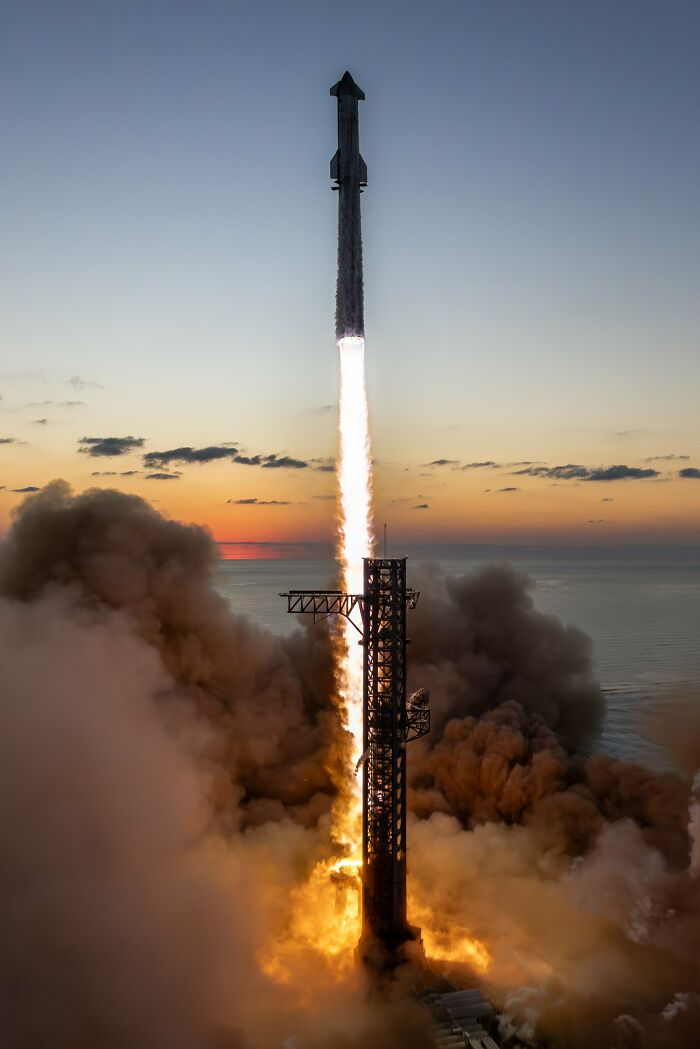
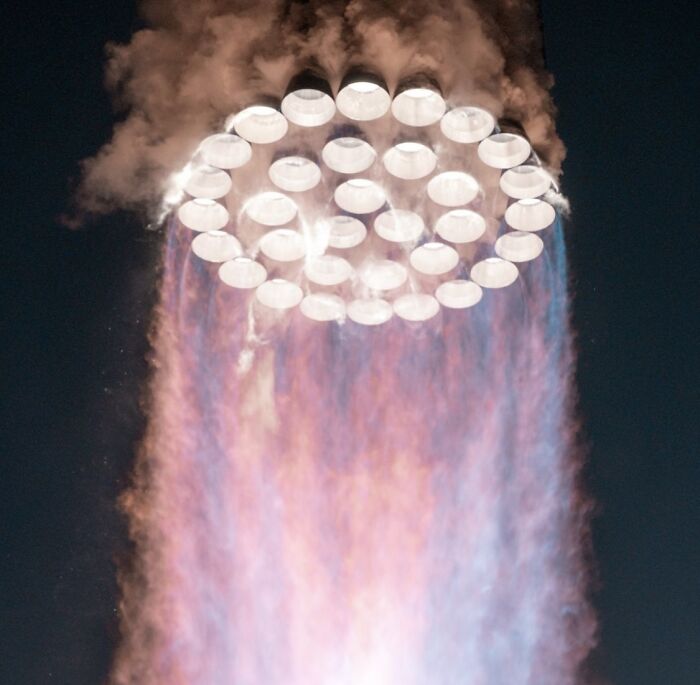
While successful ‘Mechazilla’ launch tower catches won’t apply to all of the missions, this capability will definitely help to continue building astonishingly huge Starlink broadband megaconstellations, since these type of Starships will be able to fly to and from Earth’s orbit quickly and efficiently.
Starlink is a satellite network developed by SpaceX to provide low-cost internet to remote locations and the company hopes to have 42,000 satellites in this megaconstellation.
Starlink satellites orbit about 550 kilometers (342 miles) above Earth and make quite a spectacle for all the sky gazers, because as they move across the sky, they look like some kind of string of pearls perfectly visible even to the unaided eye.
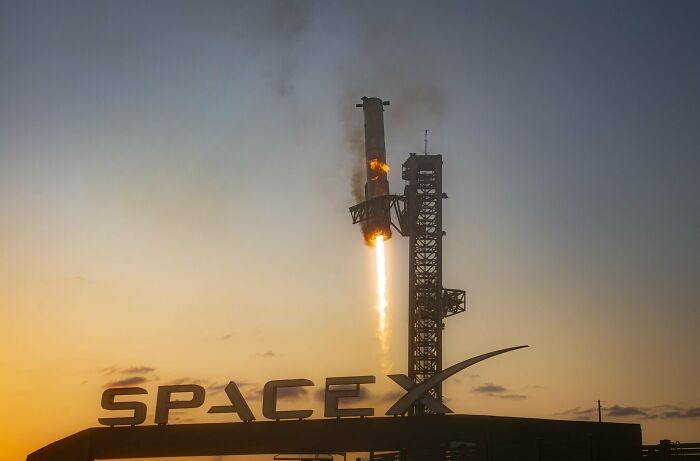
Starship vehicles have been launched 5 times by now, including two failures, yet each test brought real progress.
In the future, Elon wants Starship to make trips to Mars and back, which would take about a nine-month trip each way with about 100 people per flight, as well as launch space telescopes, put up thousands of satellites quickly or carry heavy loads needed to build infrastructure for a human presence on the Moon.
Therefore, the successful catch of the giant Starship booster is just one more remarkable step in preparation for a very exciting future space journey.
People on the internet were overwhelmed by SpaceX’s truly remarkable achievement
